WAR IN UKRAINE: UNDECLARED, UNACKNOWLEDGED, AND UNABATED
Paper prepared for presentation at a CIUS seminar, University of Alberta, Edmonton, 20 January 2015 .
We’re in an era of change. The wars of the past are diminishing. For America, the wars of the future are likely to be small, subtle, and waged by mysterious men of mysterious origin.
They’re shadow wars.[1]
Is the dream of Ukrainian sovereignty—resuscitated most recently in 2014—about to be permanently extinguished? Is the undeclared war in eastern Ukraine’s oblasts of Donetsk and Luhansk the last gasp? The answer depends on uncovering the true nature of the conflict going on there. Some are calling it a “civil war,” while others see it as outright invasion. Still others look for clues in the mind and strategies of Russian President Vladimir Putin. A clearer understanding of the nature of present-day warfare provides a basis for anticipating how this conflict is liable to unfold in the coming year.
On the sidelines of the armed conflict in Ukraine there has developed a secondary war of words as to whether this is a “civil war,” a “hybrid war,” or simply a Russian invasion. From the very onset of fighting between rebels based in Luhansk and Donetsk oblasts and Ukrainian government forces, a new Cold War has very quickly taken shape. Left-wing and pro-Russian observers are calling it a “civil war” for which the United States is to blame; pro-Ukrainian and pro-Western pundits denounce Russia for launching a “hybrid war” on Ukraine, much as it did in Georgia in 2008. These are very often like conspiracy theories dressed up to resemble informed opinion or sophisticated analysis, but with little evidence and plenty of emotion to back them up. What does it matter if this war is a “civil” one or a “hybrid”?
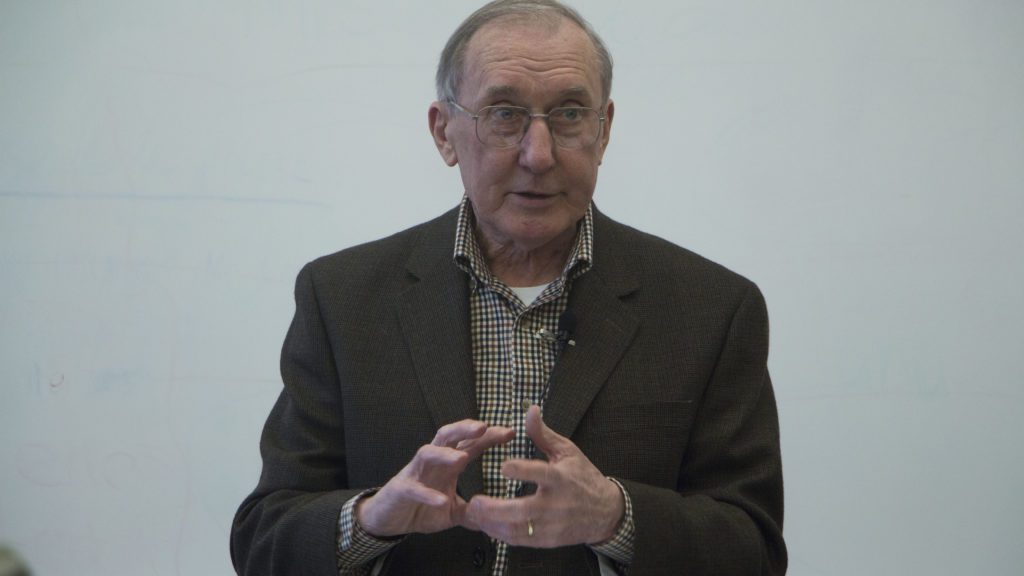 Bohdan Harasymiw, Acting Coordinator, Centre for Political and Regional Studies,Canadian Institute of Ukrainian Studies.
Bohdan Harasymiw, Acting Coordinator, Centre for Political and Regional Studies,Canadian Institute of Ukrainian Studies.
In fact, it matters a great deal whether this conflict is one kind of war or the other—it matters most of all for strategy, counter-strategy, and prospects of resolution. But to see that it matters we must step away from, or rather go beyond, using the key terms merely as labels by means of which the antagonistic polemicists are simply voicing approval or disapproval—for those on the left, “civil war” means “I don’t like it, and the Americans are to blame;” for their opponents, “hybrid war” means “this is awful and it’s the Russians’ fault, most of all Putin’s.” If instead we seek to re-imagine these terms as proper social science concepts, and link them to theories of war and insurgency, we shall gain a clearer, more objective understanding of the nature of this conflict, its dynamics, and its probable consequences, leaving behind wishful thinking of one kind or another.
My argument is that while the armed conflict in eastern Ukraine is not a civil war, it is very much a war, but in the unconventional, contemporary sense. This means that it will continue to be difficult to fight—for both sides—and that victory will almost certainly be unattainable. Most of its victims, as in all of today’s other wars of this kind, will be the civilian population. I shall also argue that analogies with the Bosnian ethnic civil war are mistaken because the two cases are not at all comparable. Russia’s ability to block United Nations action in the Security Council is deplorable, although in practice the record of UN peacekeeping operations would not inspire much confidence. Why this war has not yet been declared by either side is another intriguing question, the answer to which also fits with the theories and practice of contemporary warfare. Resolution of the conflict would require reinstating the central government’s legitimacy in the contested region, restoring the rule of law, and—most immediately—mounting an effective counterinsurgency strategy, none of which at this time is in prospect.
At the beginning of 2014, even before the rebels in the Donbas had taken up arms, ex-president Leonid Kravchuk was already warning that his country was on the “brink of civil war.”[2] In April, the Russian Foreign Ministry raised a similar alarm.[3] At the International Economic Forum in St. Petersburg, Russian President Vladimir Putin blamed the West for what he called the coup against Viktor Yanukovych, which was now threatening civil war.[4] Once violence had erupted, various commentators continued the narrative, either uncritically or else deliberately adopting that terminology and story line.[5] But if Ukraine was experiencing a civil war, who, exactly, were the warring sides? As Doug Saunders pointed out early on,[6] finding a genuine and distinct fault line between the country’s Russian and Ukrainian parts—in ethnic, national, or linguistic terms—is extremely difficult, whether one is looking from the outside or the inside. The excuse for a civil war had to be invented, but once launched it developed legs of its own.
A classic definition of “civil war” says that it is “a large-scale and sustained bout of hostilities between rival factions in a state for the possession of supreme political power, or between the government of a state and insurgents.”[7] So far so good: the Ukrainian government’s forces have been fighting against pro-Russian rebels in the eastern provinces of Donetsk and Luhansk since April 2014. Ergo this is a civil war. But that would be just the view on the surface. It is only a superficial resemblance. Categorization is not explanation, as we all know. For a fuller investigation into the subject, a good starting-point, at least from the English-language political science literature, is Harry Eckstein’s pioneering edited volume, Internal War, published in 1964.[8] In it he and his fellow contributors make several valuable suggestions regarding how to begin to approach the subject. First is recognizing the inherent complexity of civil wars. “Internal wars,” wrote Eckstein, “belong to the realm not only of social force but also to political competition, since their object is to obtain political outputs advantageous to the groups that urge them—favorable policies, offices, or general control of the political structure of society. . . . [They also] belong to the larger universe of social deviance, . . . [and to] war, . . . [i.e.,] violent social conflict waged with very few [if any] shared normative rules. . . .”[9] Secondly, terror should be seen as a strategy or tool within the context of internal war (which includes revolutionary violence as well as civil war).[10] Thirdly, internal war ought to be viewed as a process passing through several phases: preparatory, initial violence, expansion, victory, and consolidation.[11] Finally, insurgency does not occur spontaneously. “The possibility of an insurrectionary movement arising and then employing organized violence depends upon the existence of sharp divisions within society created by regional, ethnic, linguistic, class, religious, or other communal differences that may provide the . . . basis for supporting the movement; and a central authority that is unable to maintain uniform and consistent administrative controls over the entire country.”[12] To characterize any violent conflict as “civil war,” therefore, without taking into account the actors, the antecedents, and their motives, cause, and strategies, is to engage in oversimplification which hardly helps to advance real knowledge.
Among latter-day empirical studies of civil wars the landmark article by James Fearon and David Laitin, as well as their earlier work on interethnic cooperation,[13] have served to launch a veritable flood of very fruitful investigations bolstering our understanding of the phenomenon in a general, theoretical sense. Starting from explicit definitions of insurgency and civil war, they determine in their 2003 article the conditions favouring civil war in 127 cases of such conflicts spanning the years from 1945 through 1999. Their definitions are worth citing in full, as they have been so influential. “Insurgency,” they say at the very outset,
is a technology of military conflict characterized by small, lightly armed bands practicing guerilla warfare from rural base areas. As a form of warfare insurgency can be harnessed to diverse political agendas, motivations, and grievances. The concept is most closely associated with communist insurgency, but the methods have equally served Islamic fundamentalists, ethnic nationalists, or “rebels” who focus mainly on traffic in coca or diamonds.[14]
Furthermore, what they call “the logic of insurgency” requires that the insurgents, due to initial weakness, must cultivate good relations among the population so as to be able to hide among them; a weak government assures their success. Effective counterinsurgency policies are consequently difficult to implement in these circumstances.[15] As criteria for their list of civil wars examined, they rely primarily on the following:
(1) They involved between agents of (or claimants to) a state and organized, nonstate groups who sought either to take control of a government, to take power in a region, or to use violence to change government policies. (2) The conflict killed at least 1,000 over its course, with a yearly average of at least 100. (3) At least 100 were killed on both sides (including civilians attacked by rebels). The last condition is intended to rule out massacres where there is no organized or effective opposition.[16]
The authors’ “central hypotheses concern the relationship between ethnic and religious diversity or structure, on the one hand, and the susceptibility of a country to civil war, on the other.”[17] Using various quantitative measures usually as proxies for the variables identified in those hypotheses, their analysis came in part to the following conclusion:
The conditions that favor insurgency—in particular, state weakness marked by poverty, a large population, and instability—are better predictors of which countries are at risk for civil war than are indicators of ethnic and religious diversity or measures of grievances such as economic inequality, lack of democracy or civil liberties, or state discrimination against minority religions or languages.[18]
Unfortunately, in adopting the rational actor approach, Fearon and Laitin leave out of account motivation and agency—they do not look at actual grievances, but at indirect or hypothetical indicators of possible grievances—thus providing only the structural correlates of civil wars rather than their genesis and progress.
Fortunately for our purposes, however, other scholars have taken up the challenge of uncovering some of the origins as well as dynamics of civil wars, going beyond their structural features. Civil wars are not generated automatically, just because a country is poor or has mountainous terrain. One such refinement has been put forward by Joseph Young of the American University in Washington, DC.[19] Examining 162 states during the period from 1976 to 1999, Young finds, to put it in the briefest terms, that civil wars are generated in weak states which are repressive; such states are liable to be challenged by dissidents; as the dissidents are in their turn repressed, so societal support for the government decreases and violence increases; insecure leaders will use repression to stay in office thus hastening the onset of civil war.[20] Hence, civil wars are actually generated in large part by the interaction between a government’s leaders, the society at large, and the dissidents between the two. Another study, by scholars at the University of California at San Diego, begins from the observation that nearly two thirds of all civil wars since 1946 have been based on ethnic divisions.[21] To account for this anomaly, and in contrast to Fearon and Laitin, they argue
that rebel movements are more likely to mobilize around ethnicity because ethnic groups are more apt to be aggrieved, better able to mobilize, and more likely to face difficult bargaining challenges compared to other groups. These conditions are the result of: . . . the historical distribution of political power based on ethnicity, the physical location and concentration of ethnic groups (including their migration patterns), and an ethnicity-based identity that is more fixed and identifiable relative to other political affiliations.[22]
Such an advance on simply structural factors like the proportion of an ethnic group in the population will also be of help in determining whether the conflict in Ukraine can properly be classified or understood as a civil war. Incidentally, these same researchers utilize
four criteria for an ethnic group: it must (1) be predominantly self-perpetuating, (2) share core cultural values, (3) serve as a sphere for communicating and interacting, and (4) have a membership that can be self-identified and identified by others based on the group’s commonalities.[23]
Applied to the Ukrainian case, it almost immediately rules out the conflict’s designation as an ethnic civil war, since the Ukrainian situation corresponds neither to the theory nor the criteria. A final study with original and relevant findings sought to determine the influence of emigrants on the onset of civil war.[24] The authors’
theory suggests that informal institutions like diasporas influence domestic politics in their home countries via familiarity, rather than through power as is common of more formal institutions like non-governmental organizations (NGOs) or intergovernmental organizations (IGOs). . . . [T]he theory shifts the focus of civil war studies toward identifying informal institutional determinants of conflict that uniquely affect the behavior of state and non-state actors.[25]
Although their quantitative analysis achieves a level of significance of only .05, they report finding “that as a larger proportion of emigrants experience better human rights practices than their kin back home, civil war is more likely to occur.”[26] Furthermore, “the more resources migrants send home—specifically money—the more likely the state of origin will be to experience war.”[27] Whether the repression of dissidents, the mobilization of ethnicity, and/or the Ukrainian diaspora, therefore, helped or hindered or caused the conflict in the homeland are vital questions.
In sum, we have now a fuller set of criteria by which to assess whether Ukraine is embroiled in a “civil war” or not, and what follows from such an assessment. These are:
- According to the United Nations, “at least 4,808 persons were killed,” and 10,468 wounded or injured from mid-May 2014 to 6 January 2015.[28] In addition, 634,000 were internally displaced and a further 594,000 fled to neighbouring countries, mainly Russia. As of the latter date, about 5.2 million people remained in the conflict zone, of whom 1.4 million were desperately in need of humanitarian assistance.[29] In addition, 6,242 Russian soldiers are dead or missing.[30] The numerical benchmarks (see above) for killing people in a civil war have certainly been met, but what of other criteria?
- To amplify the definition offered earlier, we may cite some wise words from a retired US Army colonel who has obviously thought long and hard about this topic.[31] There are, he says, three fundamental differences between insurgency and conventional warfare. “First, it is an internal war.” It arises from conditions of dysfunctionality, has a distinct life cycle, and involves insurgents, their Cause, and the people. “Second, an insurgency is ‘armed politics.’ . . . In an insurgency the people are the political object and are involved in every military or political activity that takes place.” Thirdly, the weapons are different from those of conventional warfare.[32] Turning Clausewitz thus on his head, “the people are the centerpiece of the war in an insurgency.”[33] For an insurgency, as two British scholars have additionally pointed out, the objective is “to gain political-military control of a population and its territory,” which requires “direct interaction with a population.”[34] Insurgencies, in contrast to terrorist campaigns, cultivate popular support. “The primary objective of insurgent militants is,” they emphasize, “control over the civilian population in order to sever its ties with the government.”[35] As to origins, putting it succinctly, “the primary cause of an insurgency [is] perceived illegitimacy of the rulers.”[36] More specifically, ineffective government, social inequality, and economic discontent will spark an insurgency; as long as such problems last, so, too, will the insurgency.[37] In the case of Ukraine, the situation is murky, and has been from the outset. Its would-be insurgency had no perceptible antecedents or precursors in the years before 2014; armed rebels appeared instantly, as though on cue, right after Russia’s seizure of Crimea, denouncing the successor government to Yanukovych as “illegitimate.”[38] These rebels’ Cause also has been vague and variable—protection of Russian-speakers (none of whom had hitherto complained of discrimination, because there wasn’t any); “sovereignty”; secession from Ukraine; autonomy within Ukraine; federalism; or joining Russia. Their link to the people has been tenuous to say the least, their style of rule having more in common with Stalin or Brezhnev than Mao.[39] Nor have they hesitated, as they themselves acknowledge, to use civilians and their domiciles as human shields.[40] Their weapons—including Russian T-72 tanks, artillery, armoured vehicles, and Grad rocket launchers—are not those common to insurgents, usually lighter equipment. This is, furthermore, not an internal war, since the rebels openly acknowledge receiving—and have made frequent appeals for—Russian support, despite official Russian denials.
- Repression and Dissent. Prior to April 2014, when this conflict erupted, it would have been outlandish for any reasonable person to assert that there had been widespread dissent in Donetsk and Luhansk to which the government in Kyiv had responded with repression. After all, these oblasts had elected the Yanukovych government which had responded certainly not with repression, but with subsidies. This dynamic could not have played a part here, but was manufactured as part of the discourse afterwards.
- The conflict in eastern Ukraine clearly does not qualify under the heading of ethnic civil war, since no one to my knowledge—neither the combatants nor their backers nor eyewitnesses nor armchair experts—has ever referred to it as a clash between ethnic Ukrainians and ethnic Russians. This makes it totally unlike the Bosnian civil war, where antecedent ethnic divisions were politicized (political parties were ethnically based, whereas there were none of note in Ukraine), the armed conflict was clearly among Croats, Muslims (Bosniaks), and Serbs, and where the settlement was of necessity along ethnic lines.[41] Besides, post-Tito Yugoslavia was for historical reasons of security policy awash in weapons whereas Ukraine was not.
- This would have been an unlikely cause, since the collection of money to support the pro-government side in the conflict among the diaspora in Canada, for example, only got under way after the fighting had started, not before.[42]
As a consequence of all these many discrepancies, therefore, this particular conflict between the Poroshenko-Yatseniuk government and the rebels in the east of Ukraine does not, in my opinion, correspond to a civil war in the full sense, it simply cannot be understood as one, it does not have the characteristic features of one or its dynamics, and its resolution cannot be foreseen or sought along historically established lines.[43]
A better prism through which to view and to interpret today’s conflict in Ukraine comes from the literature on contemporary warfare. World War Two is no longer relevant. According to Mary Kaldor, the twenty-first century has ushered in a pattern of “political violence . . . [that] is more omnipresent, more directed at civilians, involves a blurring of the distinction between war and crime, and is based on and serves to foment divisive identity politics.”[44] This is what she calls “new war,” by which she means to distinguish it from prevalent notions of war originating in earlier centuries, Clausewitzian in the nineteenth, total war in the twentieth. Incubated in the final decades of the latter, Kaldor emphasizes its political nature, its “blurring of the distinction between war, . . . organized crime, . . . and large-scale violations of human rights,” as well as its global connections.[45] Arising as they do within “the context of the erosion of the autonomy of the state and . . . of the monopoly of legitimate organized violence,”[46] these new wars are distinguishable by their goals, methods, and financing. “The goals of the new wars are about identity politics in contrast to the geopolitical or ideological goals of earlier wars.”[47] The mode of warfare, combining guerilla with conventional warfare and counterinsurgency, is also different.[48] Furthermore, “the units that fight these wars are a disparate range of different types of groups, such as paramilitary units, local warlords, criminal gangs, police forces, mercenary groups, and also regular armies, including breakaway units from regular armies.”[49] This all takes place in a globalized war economy which is decentralized and “the fighting units finance themselves through plunder, hostage-taking, and the black market or through external assistance.”[50] In her book, the author presents Bosnia-Herzegovina and Iraq as paradigm cases of warfare in the twenty-first century.
This begins to suggest a closer resemblance to the Ukrainian situation. The implications of all this for conflict management, Kaldor concludes, as her case studies show, is that conflicts involving identity politics may be insoluble, long-term solutions require restoration of legitimacy and putting organized violence under public control—this is a political and legal process.[51] “The new type of warfare is a predatory social condition. . . . [And] it is very difficult to contain . . . either in space or in time.”[52] All in all, she reiterates, “the new wars . . . are very difficult to end.”[53] The prognosis does not look good.
Of special interest is Kaldor’s thought on the composition of armed forces in these new wars. In “failed states,” she writes, there is “a growing privatization of violence.” Hence, “the new wars are characterized by a multiplicity of types of fighting units, both public and private, state and non-state, or some kind of mixture. I identify five main types: regular armed forces or remnants thereof; paramilitary groups; self-defence units; foreign mercenaries; and, finally, regular foreign troops , generally under international auspices.”[54] She is careful to define and to elaborate on these groups, something also useful for our purposes below. The “paramilitary,” for instance, are “autonomous groups of armed men generally centred around an individual leader.”[55] On the other hand, “self-defence units are . . . volunteers who try to defend their localities.”[56] Kaldor provides examples and includes child soldiers, common in Africa. “Foreign mercenaries include both individuals on contract to particular fighting units and mercenary bands. Among the former,” she says, “are former Russian officers working on contract with the new post-Soviet armies. . . . The most well-known mercenary bands are the Mujahidin.”[57] She also mentions UN and NATO troops. Altogether, this is a potent brew, at the very least a mighty challenge for coordination and control. “These various groups,” Kaldor appropriately notes, “operate both autonomously and in cooperation. What appears to be armies are actually horizontal coalitions of breakaway units from the regular armed forces, local militia or self-defence units, criminal gangs, groups of fanatics, and hangers-on.”[58] Fortunately for these combatants, there are lots of weapons available; indeed, the “new wars” might even be considered “a form of military waste disposal.”[59]
This “new war” perspective on present-day violent conflicts corresponds more closely to what we observe in Ukraine over the past year, as well as accounting for many of the anomalies apparent if viewed as “civil war.” Let us briefly consider the Ukrainian conflict under the following broad criteria, keeping in mind the characteristics of “new wars”: goals, methods, and finance.
- From the very beginning, Russia insisted on its right to defend its fellow-countrymen in Eastern Ukraine, as it had those in Crimea.[60] And the rebels have similarly articulated the same goals, with the same rationale—that the government in Kyiv following Yanukovych’s departure was illegitimate and populated by “fascists,” still unreconstructed from World War Two. This version of “identity politics” may be a cover for Russia’s geopolitical aims (about which more below), but it has certainly been an easier sell than territorial aggrandizement in the propaganda sphere. This, at least to a limited extent, locates the current conflict within the ambit of what Kaldor and others would call “new wars,” which tend to be more about identity politics rather than ideology or geopolitics.
- The augmentation of the rebels’ armouries with tanks, APCs, artillery, anti-aircraft missiles (notably misused in shooting down Air Malaysia flight 17 in July), and rocket launchers, in addition to their supply of small arms, qualifies this conflict as one of our times’ “new wars.” The Ukrainian armed forces’ use of tanks, artillery, airplanes, and helicopters likewise conforms to the pattern. We are also seeing a combination of guerilla and conventional warfare, with considerable civilian casualties. Indeed, the inordinate scale of displacement of the civilian population (referred to above) fits with the general patterns of “cleansing,” which is the opposite of traditional guerilla strategy. The variety of types of armed groups participating as combatants is striking and certainly justifies categorizing the conflict as war rather than civil or internal war. On the rebels’ side, for example, there are: regular soldiers from the Russian Armed Forces and other security services (e.g., FSB and Emergency Services); fighters from Ossetia and Abkhazia; deserters from the regular Ukrainian Army; Cossacks; organized criminal groups; self-defence forces not entirely under rebel command; mercenaries of various nationalities trained in Russia; local police; and the core rebels themselves—paramilitary units commanded initially by Igor Girkin-Strelkov and by Denis Pushilin.[61] Strelkov, a Russian citizen, resigned his post and returned to Russia, reportedly having been wounded; he subsequently claimed to have started the war, effectively nullifying the widespread notion that it had ever been truly a “civil war.”[62] In January 2015, President Putin added still more variety to this mélange by issuing a decree which opened the door to foreign nationals’ serving in the Russian military.[63] On the Ukrainian side, likewise, the regular forces of the Army and National Guard have been augmented by police, by various self-defence forces, including oligarch-sponsored private armies, and government-sponsored partisan detachments.[64] Perhaps indicative of the ratio of regular to irregular personnel, of 1250 soldiers killed on the Ukrainian side as of early December 2014, 952 belonged to the regular Armed Forces.[65] By mid-January 2015, the rebels and their allies outnumbered the Ukrainian forces in the zone of conflict.[66]
- Irregular means of financing the war effort are also typical of both sides. The government’s resources—the war was this month said to be costing Ukraine $10 million daily—are being supplemented by volunteer civilians manufacturing clothing and food, as well as procuring military equipment, for the troops.[67] On the rebel side, a bootleg liquor operation was uncovered selling its product in Western Ukraine to fund the war in the east.[68] Until the Ukrainian government imposed an economic blockade on the rebel areas, it was in effect financing the war against itself. Thereafter, the rebels have instituted a system of taxation.[69] It is reported that of the “humanitarian aid” delivered by truck convoys from Russia only a fraction reaches the civilian population; the lion’s share is trafficked through the black market by officials of the rebel-held “people’s republics.”[70]
Such a high degree of correspondence between the three basic criteria offered by Mary Kaldor and the familiar features of the situation in Ukraine convinces this writer, at least, to forebear classifying the current conflict as “civil war” in favour of “new war,” or simply “war.” It means that the conduct of the war on both sides will continue to be difficult to control and that it will probably last indefinitely.
Along these same lines armchair strategists have been bantering about the “hybrid war” being waged against Ukraine by Russia. Andriy Parubiy, head of Ukraine’s National Security Council (RNBO), made this claim in an interview in the Financial Times.
“This is a so-called new type of war, a hybrid war, where armies do not always take on the role of direct aggressor. Instead, they act to intimidate, while imported diversionary groups, together with local extremists and criminal gangs” carry on the fighting on the ground, Mr Parubiy added. “[These groups] could not enter or act in Ukraine without the co-ordination and support of Moscow.”[71]
Scholars, however, have voiced scepticism as to the concept’s vaunted efficacy, in general, not only in its application to Ukraine. A professor of war studies at King’s College London, for example, asserts that “in disputes over territory, the most effective forms of control involve regular armed forces and superior firepower.”[72] Insofar as, according to him, the “Russian intervention . . . has been driven by weakness as much as by strength,” the Russians had to change their strategy once the conventional Ukrainian forces began to gain an advantage over the unconventionally organized and equipped rebels by sending in regular forces. Thus “hybrid warfare,” he says,
may well have been the approach adopted by Russia during the first months of the crisis in Ukraine. It appears that preparations had been made for this contingency for some time. The separatist forces, however, had a complex structure, including local agitators, militants who had learned their trade in Chechnya and Georgia, and some Russian special forces. Coordination was often poor and political leadership at times eccentric. Their methods alienated local people and used the sophisticated Russian equipment recklessly. They could not cope with regular Ukrainian forces once they were organized and prepared to deploy firepower more ruthlessly and so eventually had to be rescued by progressive and eventually quite overt Russian intervention. This case therefore shows some limits of hybrid warfare, and in particular the difference between combining different approaches in the same force and combining forces which are different not only in approach but in political interests and organizational structures.[73]
Which goes to show the unreliability of this kind of warfare, whether we call it “new war” or ‘hybrid war.” Similarly, while many observers have latched onto an article by General Valerii Gerasimov (or references to it) as the key to Russia’s “hybrid war” doctrine and its being applied in Ukraine, Roger McDermott cautions that on closer examination the Russians are actually simply experimenting with this type of “non-linear warfare” rather than following a doctrine.[74] In view of war’s unpredictability in general this seems a more sensible interpretation rather than what passes for conventional wisdom about Russia’s “hybrid war” in Ukraine. Another current misconception of which we need to be disabused, according to US political commentator Paul Goble, citing Vladimir Voronov, is that “hybrid war” was invented by Putin, when in fact it was Stalin.[75] Yet as Vladimir Khomiakov comments, Russia did not win a single one of its “hybrid wars” in the course of a century.[76] On the other hand, Alexander Motyl has endorsed the argument put forward by a leading Ukrainian military analyst that Ukraine should turn the tables on Russia by unleashing “hybrid war” on the rebel Donbas area. “Hybrid war,” Motyl reminds us, “is Russia’s new way of war-making in southeastern Ukraine, one that employs a variety of means—propaganda, subversion, outright aggression, support for proxies, and the like—while remaining undeclared or denied.” [77] Ukraine, he says, should reciprocate; in fact, however, by force of circumstance and the nature of modern warfare, Ukraine is already waging “hybrid war” against the rebels and their Russian backers without necessarily having made a conscious decision to do so.
Unfortunately, Ukraine’s offensive against the rebellious east is not going well. The Ukrainian army was totally unprepared for this. It had no experience other than participating in UN peacekeeping operations.[78] The country had no effective border defences against an incursion by Russia; its main enemy was elsewhere, if it had one at all in its strategic doctrine. In February 2014, interim President Oleksandr Turchynov revealed that he had as few as 6,000 combat-ready troops; by May, this had reportedly been increased to 40,000, but they were so poorly equipped “that requests to the United States for nonlethal aid . . . included such basics as field rations, blankets and even toothpaste.”[79] Volunteers joining the medical section of a National Guard battalion were lauded for bringing their own medicines with them; a church parish of the Kyiv Patriarchate donated a jeep to the unit; and families were expected to support the volunteers financially, although their pay was officially 1300 UAH per month.[80] The army has been riddled with corruption and incompetence; Ukraine went through five ministers of defence in 2014, which itself reflects badly on President Poroshenko’s personnel management abilities.[81] Ukraine still relies on a conscript army. So do Switzerland and Israel,[82] with excellent results, but they are not burdened with a military tradition that for centuries has used conscripts as cannon fodder. In the present circumstances, therefore, the Ukrainian government has unsurprisingly raised the draft age to include 27-year-olds, has ordered a partial mobilization whereby 50,000 ex-servicemen and –women are to be called up in three waves during 2015, and is planning to increase the army’s strength with 40,000 draftees (for 18 months’ service) and 11,000 on contract to an overall total of 250,000.[83] Doubts have been expressed about the quality of the new draftees—practically zero, according to presidential adviser Yuriy Biriukov—and the efficacy of continuing with a conscript army as opposed to a professional one.[84]
This proposed buildup corresponds with Oleksandr Turchynov’s assertions made at the end of 2014, that in order to push Russia out of rebel territories Ukraine needs a strong army because diplomacy simply does not work.[85] In fact, the secretary of RNBO maintains that Ukraine needs not just a strong army, but “at a minimum one of the strongest in Europe.”[86] Such a perspective is understandable on first glance, but it is problematic. If the pro-Russian side is pursuing a “hybrid war,” then willy-nilly the Ukrainian response must coincide, and a conventional army—no matter how large in numerical terms or advanced technologically—is not guaranteed of success: just look at the United States’ experience in Afghanistan, Iraq, and Vietnam. “The main danger,” according to Valentyn Bardak, putting the matter in terms familiar within the Russian-Ukrainian strategic discourse, then,
is that Russia has gone over to the tactic of contactless war. The Ukrainian forces here find themselves in a situation where they are compelled to keep quiet because they do not have the possibility of conducting contactless war. We are used to wars of the third generation, like we had last year, where all military action involved a clash of forces and means. Today the situation is changing not in favour of Ukraine. The pro-Russian groupings more and more are waging a contactless war, and are conducting diversions on the territory of stable regions. In these circumstances the Ukrainian side can only passively defend itself and counts on diplomatic levers as well as on the influence of the West’s economic sanctions. This is not enough to shift the advantage to our side. Thus great problems remain and mobilization will not in any way resolve them.[87]
Measures are also being taken to rationalize, for example, rear services (procurement and logistics) for the Ukrainian army.[88] Individuals have been prosecuted for indiscipline, and such cases have been given publicity in the mass media.[89] More up-to-date equipment is being obtained and supplied: armoured vehicles, heavy trucks, radar stations, artillery, and rifles and other firearms.[90] A former presidential adviser has expressed regret that an effective response to the rebellion was not launched in April 2014, nipping it in the bud, before the war started.[91] Strengthening the army may bring some marginal benefits to the Ukrainian side, but it is hard to disagree with an ex-deputy minister of defence, when, taking all factors into account, he says that the conflict in the Donbas is now frozen and will remain so for a long time.[92]
War is political. In the din of battle and accompanying noise from the mass media it is often easy to overlook this fundamental rule. Yet all the literature dealing with violent conflict—whether it be called “shadow wars” or “new war” or insurgency or counterinsurgency or “violent non-state actors”—reminds us that resolution requires attention to the political and not merely the military aspects of the conflict.[93] Restoration of legitimacy and the rule of law must be the political objective, but this goal has not been articulated by President Poroshenko, and his administration has made few if any obvious efforts in that direction, concentrating instead primarily on a military solution. He offered at one point “special status” for the affected provinces, but his government has also cut off all state pensions and salaries to the inhabitants.[94] So far, the Ukrainian government has refrained from declaring the conflict a war—although Turchynov most recently raised the possibility at the end of 2014—preferring to designate it as an anti-terrorist operation (ATO), thus avoiding obligations that would be required by international law.[95] Talks have been held, postponed, relocated, and broken down, but direct negotiations between the warring parties have not taken place—presumably because Poroshenko does not recognize the rebels and Putin denies that his own forces are involved. Little wonder that some observers feel the Ukrainian government is lacking altogether a strategy for resolving the conflict.[96]
Meanwhile, according to a public opinion poll conducted in December 2014, “40 % of Ukrainians believe that a national reconciliation, after all that has happened in the Donbas, is possible if Russia suspends its interference in Ukrainian affairs.”[97] Only 1.8 per cent of respondents were fully in agreement that the Donbas should be abandoned; a majority (54.3 per cent) preferred that it remain within Ukraine, while in the Donbas itself the percentage was 72.6.[98] A societal basis for resolution would thus seem to be present and favourable—certainly not hopeless.
In this paper I have examined the conflict as internal to Ukraine. I have not looked at the Russian incursion from outside, its motives, and Putin’s strategy. Nor have I paid attention to the information war being waged against the West and Ukraine, in partial response to which the latter government has created a ministry of information (or ministry of truth). Perhaps if the CIUS invites me back, I can attempt a survey of Russia’s involvement in the crisis in Ukraine. At that time I can offer an explanation as to why this is an undeclared war. It would be along the lines that since this is an unlawful conflict, and since Putin’s regime itself verges on the criminal,[99] then the instigators and their backers have an interest in keeping it that way (i.e., undeclared) and in prolonging it. But that is a topic for another paper.
BH 19 January 2015
[1] David Axe, Shadow Wars: Chasing Conflict in an Era of Peace (Washington, D.C.: Potomac Boos, 2013), ix.
[2] BBC News, 29 January 2014.
[3] CNN, 8 April 2014.
[4] Common Dreams, 23 May 2014. On the internet at commondreams.org/news/2014/05/23/putin-us-backed-coup-now-threatens-civil-war-ukraine.
[5] See, for example, The Guardian, 15 May 2014; Deutsche Welle, 6 May 2014; Political Violence @ a Glance, 21 May 2014; Cherson and Molschky, 4 June 2014; USNI News, 28 July 2014; Time, 25 August 2014; SocialistWorker.org, 2 September 2014, on the internet at http://socialistworker.org/2014/09/02toll-rises-ukraines-civil war; and Washington Post, 26 December 2014.
[6] Doug Saunders, “Here Are Five Ways to Split Ukraine. None of Them Work,” Globe and Mail, 23 April 2014.
[7] The Blackwell Encyclopaedia of Political Institutions, ed. by Vernon Bogdanor (Oxford: Blackwell Reference, 1987), s.v., “civil war,” p. 106.
[8] Harry Eckstein, ed., Internal War: Problems and Approaches (New York: The Free Press; London: Collier-Macmillan Limited, 1964).
[9] Eckstein, “Introduction. Toward the Theoretical Study of Internal War,” in ibid., p. 12. Original emphasis.
[10] Thomas Perry Thornton, “Terror as a Weapon of Political Agitation,” in Internal War, pp. 71-99.
[11] Ibid., 92-5.
[12] Lucian W. Pye, “The Roots of Insurgency and the Commencement of Rebellions,” in Internal War, p. 163.
[13] James D. Fearon and David D. Laitin, “Ethnicity, Insurgency, and Civil War,” American Political Science Review 97, no. 1 (February 2003): 75-90; and Fearon and Laitin, “Explaining Interethnic Cooperation,” APSR 90, no. 4 (December 1996): 715-35.
[14] Fearon and Laitin, “Ethnicity, Insurgency, and Civil War,” 75.
[15] Ibid., 79-80.
[16] Ibid., 76. Among six more secondary criteria they included “(7) Involvement by foreign troops does not disqualify a case as a civil war, . . . provided the other criteria are satisfied.” Ibid., 76, n. 4.
[17] Ibid., 82.
[18] Ibid., 88.
[19] Joseph Young, “Repression, Dissent, and the Onset of Civil War,” Political Research Quarterly 66, no. 3 (2013): 516-32.
[20] Ibid., 527.
[21] Elaine K. Denny and Barbara F. Walter, “Ethnicity and Civil War,” Journal of Peace Research 51, no. 2 (2014): 199-212.
[22] Ibid., 200.
[23] Ibid.
[24] Gina Lei Miller and Emily Hencken Ritter, “Emigrants and the Onset of Civil War,” Journal of Peace Research 51, no. 1 (2014): 51-64.
[25] Ibid., 52.
[26] Ibid., 61.
[27] Ibid.
[28] Dzerkalo tyzhnia, 12 January 2015.
[29] Ibid.
[30] Dzerkalo tyzhnia, 19 January 2015.
[31] G. L. Lamborn, Arms of Little Value: The Challenge of Insurgency and Global Instability in the Twenty-First Century (Philadelphia and Oxford: Casemate, 2012).
[32] Ibid., 58. Original emphasis.
[33] Ibid., 60. Original emphasis.
[34] Isabelle Duyvesteyn and Mario Fumerton, “Insurgency and Terrorism: Is there a Difference?” in The Character of War in the 21st Century, ed. by Caroline Holmqvist-Jonsäter and Christopher Coker (London and New York: Routledge, 2010), 28.
[35] Ibid., 35-6.
[36] Lamborn, Arms of Little Value, 61. Original emphasis.
[37] Ibid., 71-8.
[38] The Guardian, 8 April 2014.
[39] The Observer, 19 April 2014.
[40] Associated Press, cited in New York Times, 4 December 2014.
[41] For a full account, see Steven L. Burg and Paul S. Shoup, The War in Bosnia-Herzegovina: Ethnic Conflict and International Intervention (Armonk, New York, and London: M. E. Sharpe, 1999). See also Stefano Costalli and Francesco Niccolò Moro, “Ethnicity and Strategy in the Bosnian Civil War: Explanations for the Severity of Violence in Bosnian Municipalities,” Journal of Peace Research 49, no. 6 (2012): 801-15. On the aftermath, see Karin Dyrstad, “After Ethnic Civil War: Ethno-Nationalism in the Western Balkans, ibid., 817-31.
[42] Ukrainian News/Ukrains’ki visti, 10-23 April 2014, and 24 April-7 May 2014.
[43] For an earlier scholarly generation’s thoughts on the termination of civil wars, see Roy Licklider, ed., Stopping the Killing: How Civil Wars End (New York and London: New York University Press, 1993).
[44] Mary Kaldor, New and Old Wars, 2nd ed. (Stanford, California: Stanford University Press, 2007), ix.
[45] Ibid., 1-2.
[46] Ibid., 5.
[47] Ibid., 7.
[48] Ibid., 8-9.
[49] Ibid., 9.
[50] Ibid., 10.
[51] Ibid., 11.
[52] Ibid., 113.
[53] Ibid., 117.
[54] Ibid., 97.
[55] Ibid., 98.
[56] Ibid., 100.
[57] Ibid.
[58] Ibid., 101.
[59] Ibid., 102. Along the same lines, see Klejda Mulaj, ed., Violent Non-State Actors in World Politics (London: Hurst & Company, 2010).
[60] BBC Ukrainian, 14 March 2014.
[61] Ibid., 10 April and 27 and 28 May 2014; Oleksandr Melnyk, “On the Logic of Nation/State-Building/Breaking in ‘Ukraine’,” Current Politics in Ukraine, 13 May 2014; New York Times, 18 April, 4 June, and 9 June 2014; UNIAN, 20 August 2014; Obozrenie, 22 December 2014; Den’, 24 December 2014; and Podrobnosti, 4 January 2015.
[62] BBC, 14 August 2014; and Mirror Weekly, 9 January 2015.
[63] RFE/RL, 6 January 2015.
[64] Washington Post, 3 June 2014; ZIK (Zakhidna informatsiina korporatsiia), 16 December 2014; Ukrains’ka pravda, 1 September 2014; Obozrenie, 22 December 2014.
[65] Ukrains’ka pravda, 6 December 2014.
[66] UNIAN, 12 January 2015.
[67] Dzerkalo tyzhnia, 12 January 2015; New York Times, 22 November 2014; and Den’, 15 January 2015. In 2014, the budget for defence had allocated 14 billion UAH, but actual expenditures were 27 billion. Den’, 6 January 2015.
[68] Den’, 17 December 2014.
[69] Ukrains’ka pravda, 25 November 2014.
[70] Associated Press in Edmonton Journal, 15 January 2015.
[71] Financial Times, 28 May 2014.
[72] Lawrence Freedman, “Ukraine and the Art of Limited War,” warontherocks.com, 8 October 2014.
[73] Ibid.
[74] Roger McDermott, “Myth and Reality—A Net assessment of Russia’s ‘Hybrid Warfare’ Strategy Since the Start of 2014,” Eurasia Daily Monitor, 17 and 20 October 2014.
[75] Johnson’s Russia List, 4 November 2014.
[76] InfoResist, 16 December 2014.
[77] World Affairs Journal, 25 November 2014.
[78] Washington Post, 19 May 2014.
[79] Ibid.
[80] Ukrains’ka pravda, 29 May 2014.
[81] Den’, 7 August 2014; Vysokyi zamok, 13 October 2014.
[82] Den’, 7 August 2014.
[83] Komsomol’skaia pravda Ukrainy, 12 December 2014; Dzerkalo tyzhnia, 15 January 2015; Den’, 15 January 2015; and Ukrains’ka pravda, 19 January 2015.
[84] 5 kanal, 6 January 2015; and Valentyn Bardak in Den’, 15 January 2015.
[85] Den’, 19 December 2014.
[86] Dzerkalo tyzhnia, 27 December 2014.
[87] Den’, 15 January 2015.
[88] Ibid., 19 December 2014, and 6 January 2015.
[89] Ukrains’ka pravda, 24 October 2014; Den’, 24 December 2014; and Dzerkalo tyzhnia, 19 January 2015.
[90] Den’, 19 December 2014.
[91] Andrei Senchenko, interviewed in Obozrevatel’, 21 December 2014.
[92] Admiral Ihor Kabanenko, in Vysokyi zamok, 25 December 2014.
[93] James Stavridis, “The Seven Lessons of Counterinsurgency 101 in Ukraine,” Foreign Policy, 10 April 2014, on the internet at http://www.foreignpolicy.com/articles/2014/04/10/the_seven_lessons_of _counterinsurgency_101_in_ukraine; Kaldor, chap. 6; Freedman; Lamborn, 123, and chaps. 7 and 9; Duyvesteyn and Fumerton,40; and Axe, xviii-ix.
[94] New York Times, 11 April 2014; BBC Ukrainian, 7 June 2014; Ukrainian News/Ukrains’ki visti, 11 – 25 September 2014; Ukrains’ka pravda, 17 September 2014, 16 October 2014, and 4 November 2014; and Vysokyi zamok, 17 October 2014.
[95] Ukrains’ka pravda, 17 and 19 July 2014, 18 August 2014, 29 September 2014, and 14 December 2014; Komsomol’skaia pravda Ukrainy, 26 December 2014.
[96] Den’, 14 January 2015.
[97] Dzerkalo tyzhnia, 6 January 2015.
[98] UNIAN, 27 December 2014.
[99] Karen Dawisha, Putin’s Kleptocracy: Who Owns Rssia? New York: Simon & Schuster, 2014).
Bohdan Harasymiw, Acting Coordinator, Centre for Political and Regional Studies,Canadian Institute of Ukrainian Studies,
University of Alberta, Professor Emeritus of Political Science,
University of Calgary
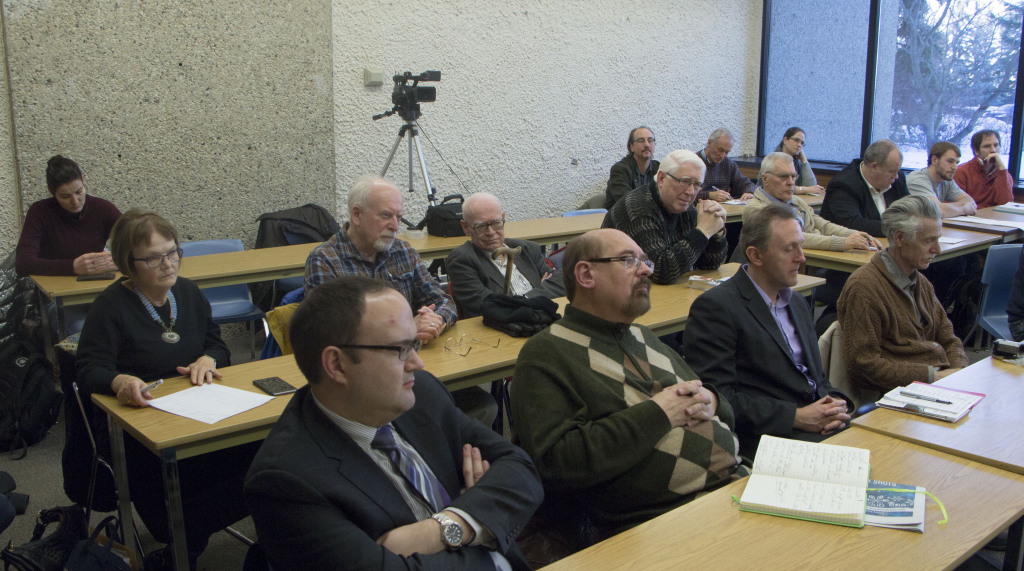
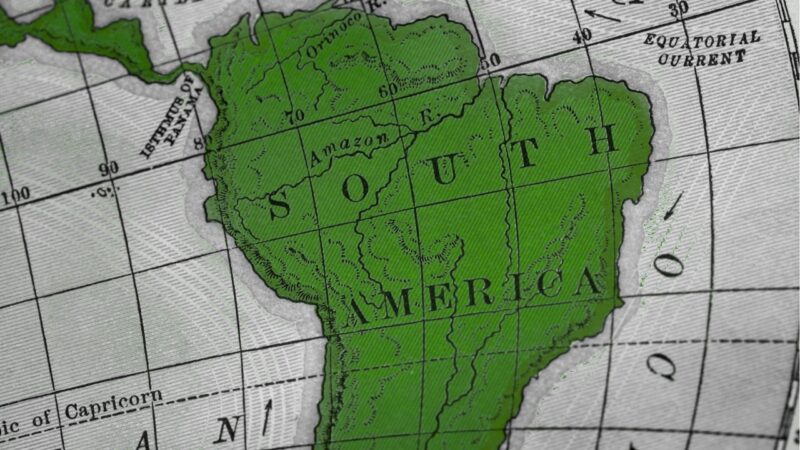
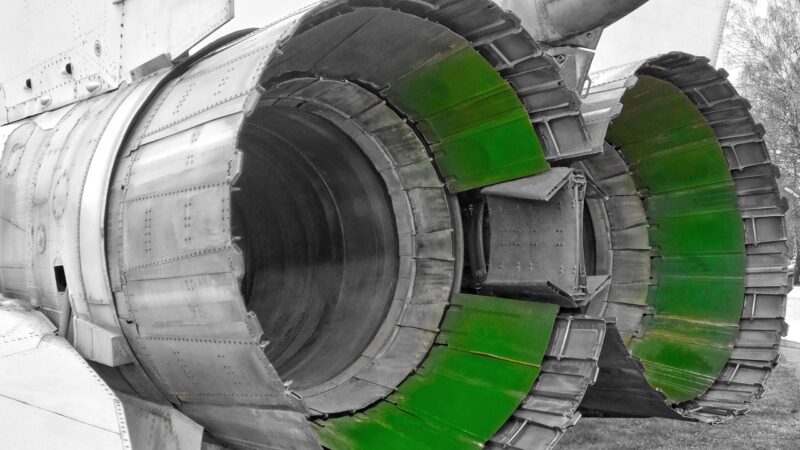
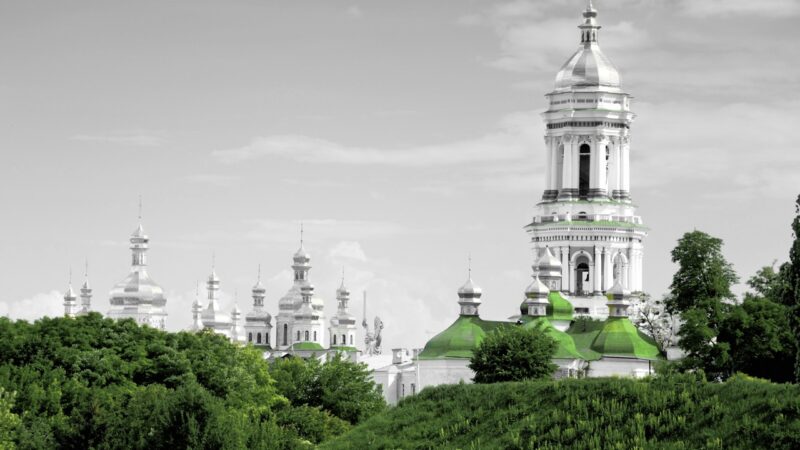
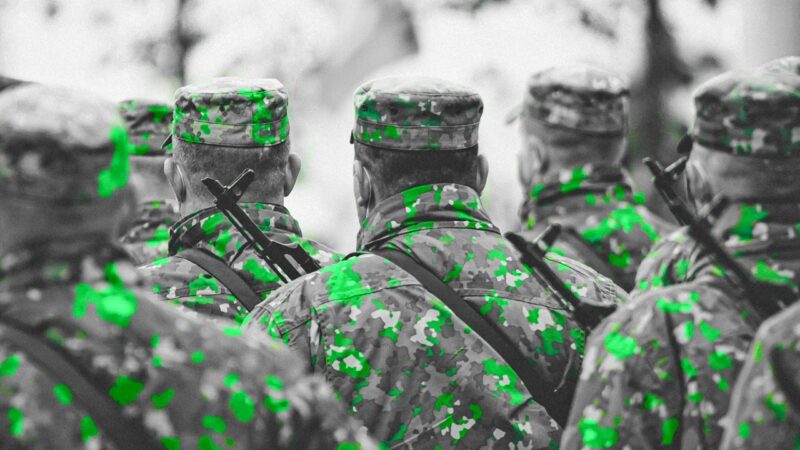
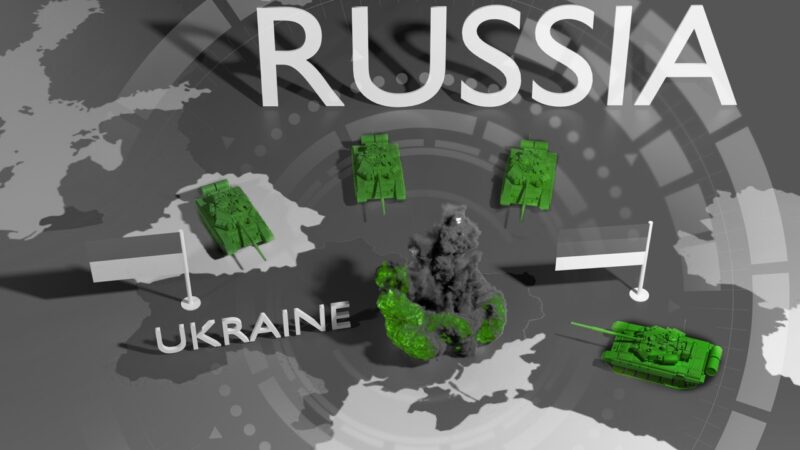
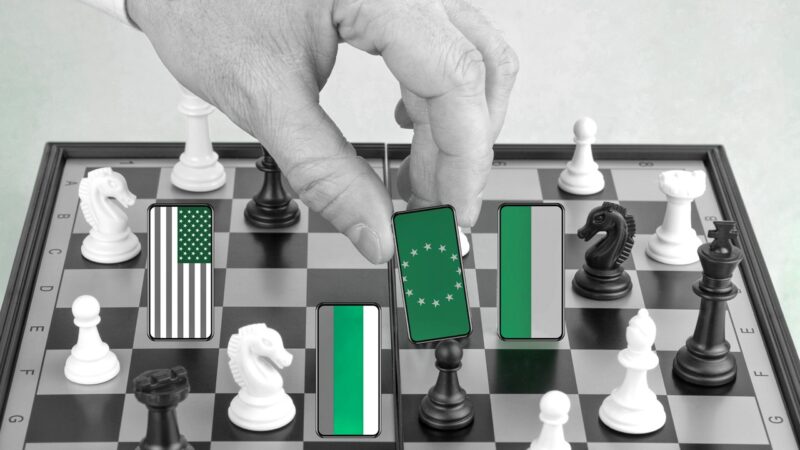
Good Work … Some rather accurate and interesting [but historically limited respecting the Kyvien Rus, Khazars and Greeks et al] information here:
https://www.youtube.com/channel/UCjRq9iYvZcb5Y5YYT3s3gBQ
I agree, mr Bohdan Harasymiv, that a conflict on Ukraine is internal. Indeed, it clear at first blush on the object of research. However, because of importance of theme with research, educational, political and, especially , with practical points of view, I decided to leave the comment here. I consider that research must be short, clear and impartial. If these requirements, especially impartiality, are not executed, the publication of it is necessary to attribute to propaganda and it’s value becomes negative.
What is it a conflict? His participants are:
On the side of Donbass –
– a local population (almost 99%) and volunteers from different countries;
On the opposite side –
– the Governmental troops (majority of a contingent, and at the beginning of conflict almost 100%),
– brigades of oligarchs (Kolomoiytsev and other).
– “gentlemen of success” from different countries.
So, opponent are: a local population and troops of Ukraine.
“Civil war is the large-scale armed opposition of the organized groups or nations,…”. – Wikipedia.
Thus, neither on a scale nor on composition of opponents a conflict is not a war.
I remind that “Government” came to power by overturn, i.e. it is illegal.
It is a punitive operation of illegal government against the population of Ukraine.
This conclusion is a “stove” from that it is needed to “dance” in all further reasoning.
I suppose that for readers small information is on the topic. On all questions and comments I will answer.